Top 5 reasons Why Your Clinic Needs a Telemedicine Doctor Appointment App
16 Jul 24 

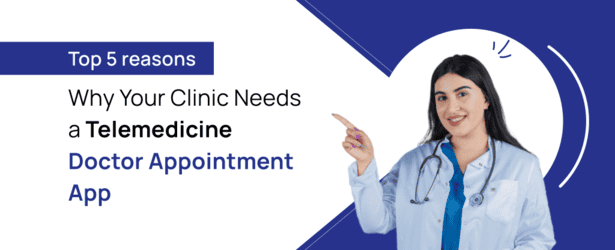
Imagine a patient waking up with a mild fever and having a video consultation with their doctor within minutes, all without leaving their home. Telemedicine makes this a reality and is quickly becoming essential for modern healthcare. In an age where digital solutions are transforming every industry, healthcare is no exception. For clinics and hospitals, a telemedicine app can bring about a change in patient care and ensure that your practice remains competitive and efficient.
This article will explain why a telemedicine app is crucial for your clinic. You’ll learn about its benefits, key considerations, and how these apps can enhance patient satisfaction and outcomes.
5 Reasons Your Clinic Needs a Telemedicine App
1. Adapting to Modern Healthcare Needs
The COVID-19 pandemic has accelerated the adoption of telemedicine, enabling healthcare providers to deliver remote consultations and care. This shift addresses the growing demand for convenient and accessible healthcare services, aligning with the changing terrain of modern healthcare needs.
2. Growing Demand for Telemedicine
The pandemic has highlighted the advantages of telemedicine, prompting an increase in demand for virtual consultations. By reducing the risk of COVID-19 transmission, telemedicine allows patients to receive care from the comfort and safety of their homes. The Australian Government recognized this need and introduced new telemedicine item numbers, enabling Medicare reimbursement for telephone or video consultations.
3. Patient Preferences
Studies have shown that patients appreciate the benefits of telemedicine, such as removing barriers to accessing healthcare, reducing travel time and expenses, and mitigating socio-economic and cultural barriers. In hospital settings, understanding patient preferences for telemedicine versus in-person appointments is crucial for future healthcare delivery planning. Patients may have specific preferences regarding the physician’s visual background during video consultations, with traditional healthcare settings being preferred over informal environments like bedrooms or kitchens.
4. Changing Healthcare Landscape
The integration of telemedicine into healthcare services has brought about increased convenience, access, and transparency for patients. Virtual care enables remote monitoring of chronic conditions, potentially reducing hospital admissions and improving patient satisfaction and treatment adherence. As the Australian Government subsidizes telemedicine permanently, healthcare providers must consider patient preferences and adapt to this changing landscape by offering a choice between in-person and telemedicine services.
5. Financial Benefits for Clinics
Implementing a Telemedicine App in your clinic can provide significant financial benefits, offering revenue opportunities, cost savings, and favorable insurance reimbursements. Let’s explore these advantages in detail.
Revenue Opportunities
- Telemedicine consultations can often be billed at parity with in-person visits, generating direct revenue for your practice.
- You can launch direct-to-consumer virtual urgent care options and bill self-pay patients at affordable prices, creating an additional revenue stream.
- Participation in remote patient monitoring programs allows you to charge monthly fees for virtually tracking patients with chronic conditions, generating passive revenue
Cost Savings
- Telemedicine visits require less staff overhead compared to in-office appointments, as doctors can conduct back-to-back video consultations without assistance for rooming or discharge.
- Automated appointment self-scheduling and intake processes lead to administrative time and cost savings.
- By unlocking operational efficiencies, you can significantly improve your profit margins.
Insurance and Reimbursements
- Various government, state, and private insurance providers reimburse telemedicine services, often at rates similar to in-person visits.
- Reimbursement policies continue to evolve, with some private insurers paying more for telemedicine services than face-to-face visits.
- Asynchronous telehealth, also known as “store and forward,” allows billing on a state-by-state basis, enabling providers and patients to share information before or after appointments.
- The COVID-19 pandemic has highlighted the importance of developing and updating guidelines and regulations for telemedicine reimbursement to meet community needs.
You may also read 10 Doctor Appointment Apps For Effective And Timely Consultation
By taking advantage of the revenue opportunities, cost savings, and favorable insurance reimbursements associated with telemedicine, your clinic can enhance its financial sustainability while delivering convenient and accessible healthcare services to patients.
Legal and Compliance Considerations
When implementing a telemedicine App for Doctors Appointment in your clinic, it’s crucial to ensure compliance with various legal and regulatory requirements. Here are some key considerations:
HIPAA Compliance
As a healthcare provider, you must adhere to the Health Insurance Portability and Accountability Act (HIPAA) guidelines for protecting patients’ protected health information (PHI). This includes:
- Verifying patient identities and obtaining consent before virtual consultations.
- Securing PHI disclosed during telehealth encounters by using HIPAA-compliant platforms and software.
- Conducting risk analyses for complex telemedicine frameworks and addressing potential security risks at the patient’s end.
- Ensuring that software vendors and service providers sign Business Associate Agreements (BAAs) to maintain HIPAA compliance.
Telemedicine Regulations
Telemedicine regulations can vary across different states and jurisdictions. It’s essential to familiarize yourself with the specific laws and guidelines in the areas where you operate. Some key considerations include:
- Determining if your state permits HIPAA-covered entities to provide telehealth services across state lines.
- Understanding state-specific regulations regarding breach notifications and the definition of a covered entity.
- Adhering to any additional privacy protections or patient rights mandated by state laws that may preempt HIPAA.
Licensing Requirements
Licensing requirements for healthcare professionals providing telemedicine services can be complex. You must ensure that your providers are appropriately licensed in the states where your patients are physically located during virtual consultations. This may involve:
- Obtaining full licenses in multiple states.
- Checking temporary practice laws or licensure reciprocity agreements between states.
- Joining multi-state licensure compacts that streamline the licensing process across participating states.
- Applying for telehealth registrations in states that allow out-of-state providers to practice telemedicine under specific conditions.
By carefully navigating the legal and compliance landscape, you can ensure that your telemedicine App for Doctors Appointment operates within the appropriate regulatory framework, safeguarding patient privacy and maintaining the highest standards of care.
Future of Telemedicine
The future of telemedicine is quite promising, with dynamic developments and emerging trends that will shape the healthcare ecosystem. Advanced technologies like artificial intelligence (AI) and virtual reality (VR) are integral to telemedicine’s capabilities, transforming diagnostics, treatment planning, and personalized medicine.
Emerging Trends in Telemedicine
The adoption of hybrid care models represents a fundamental shift in healthcare delivery, combining traditional in-person visits with the flexibility of telemedicine. These hybrid models offer a comprehensive approach, ensuring patients receive the right level of care at the right time.
AI-powered applications are being utilized for tasks such as diagnostics, risk prediction, and personalized treatment planning, enhancing the accuracy and efficiency of healthcare services. Additionally, the integration of wearable technology and remote monitoring is ushering in a new era of personalized healthcare, with devices continuously monitoring various health metrics and providing real-time data to patients and providers.
The globalization of telemedicine is extending the reach of medical expertise across international borders, enabling access to specialized care regardless of geographic location.
Get to know about Top Healthcare Apps Trends to follow in 2024
Potential Challenges
Despite the numerous benefits, telemedicine faces challenges that need to be addressed. Ensuring data privacy and security is crucial, as sensitive patient information is transmitted over the internet. Healthcare providers must invest in robust security measures and comply with regulations like HIPAA to protect patient data.
Reimbursement policies and licensing requirements can vary across states and jurisdictions, creating obstacles for healthcare providers seeking reimbursement for telemedicine services. Governments and regulatory institutions are actively working to address these challenges and ensure consistent coverage and reimbursement policies.
Access to technology and internet connectivity can be a barrier for some patient populations, particularly in rural or low-income areas. Healthcare providers may need to explore alternative methods, such as telephone consultations or partnerships with community organizations, to bridge this gap.
Continual Improvements
As telemedicine continues to evolve, healthcare providers and regulatory bodies are focused on continual improvements to enhance the quality of care and patient experience. This includes addressing disparities in telehealth usage across different age groups, languages, and genders, as well as standardizing the role of digital navigators to improve patient engagement and data quality.
Ongoing research and evaluation are crucial to validate findings, explore the dynamics of hybrid treatment models, and ensure equitable access to telemedicine services for all patient populations.
Final Thoughts
This article highlights the numerous benefits and important considerations of using a telemedicine app for doctor appointments in clinics. These apps align with modern healthcare needs, provide financial advantages, and help navigate legal standards.
Adopting telemedicine apps shows a commitment to improving patient care and clinic efficiency, especially during challenges like the COVID-19 pandemic. They enhance accessibility, convenience, and safety for both patients and healthcare providers.
The shift towards telemedicine and online doctor consultations indicates a promising future for healthcare. Digital solutions are essential for patient-centered care, improving outcomes, and meeting evolving needs. The healthcare community is encouraged to continue adopting telemedicine to ensure quality healthcare is accessible to everyone.
Mindster’s Doctor Appointment App Solution for Your Clinic
Mindster offers comprehensive assistance in developing a doctor appointment booking app to enhance your clinic’s operations and cater to the needs of both practitioners and patients. If you’re interested in exploring this further, you can get in touch with us right away
FAQ’s
1. What are the key features of a telemedicine app?
A successful telemedicine app typically includes features such as user integration, video consultation, payment gateway integration, in-app chats, prescription and pharmacy integration, and appointment scheduling.
2. How much does it cost to develop a telemedicine app?
The cost of developing a telemedicine app can vary based on factors such as features, complexity, and the development team’s expertise. It’s recommended to consult with a healthcare app development company for accurate cost estimates.
3. What regulations must telemedicine apps comply with?
Telemedicine apps must comply with specific regulations depending on the country of deployment. For example, in the USA, compliance with HIPAA is mandatory to ensure patient data security and privacy. Additionally, each country has its own local variations of data protection laws and medical device regulations.
4. What technologies are driving telehealth app development today?
Technologies such as wearable technology for remote patient monitoring, AI technologies like machine learning and natural language processing for personalized recommendations, and integrations with existing healthcare systems for seamless information exchange are driving telehealth app development.
5. Can telehealth apps integrate with existing healthcare systems?
Yes, telehealth apps can integrate with existing healthcare systems through electronic health record integration, appointment scheduling, and e-Prescriptions, streamlining information exchange and enhancing patient and doctor experiences.
- Agentic AI1
- Android Development3
- Artificial Intelligence36
- Classified App3
- Custom App Development5
- Digital Transformation12
- Doctor Appointment Booking App14
- Dropshipping1
- Ecommerce Apps40
- Education Apps2
- Fintech-Apps38
- Fitness App4
- Flutter4
- Flutter Apps20
- Food Delivery App5
- Grocery App Development1
- Grocery Apps3
- Health Care10
- IoT2
- Loyalty Programs9
- Matrimony Apps1
- Microsoft1
- Mobile App Maintenance2
- Mobile Apps130
- Product Engineering6
- Progressive Web Apps1
- React Native Apps2
- Saas Application2
- Shopify9
- Software Development3
- Taxi Booking Apps7
- Truck Booking App5
- UI UX Design8
- Uncategorized6
- Web App Development1









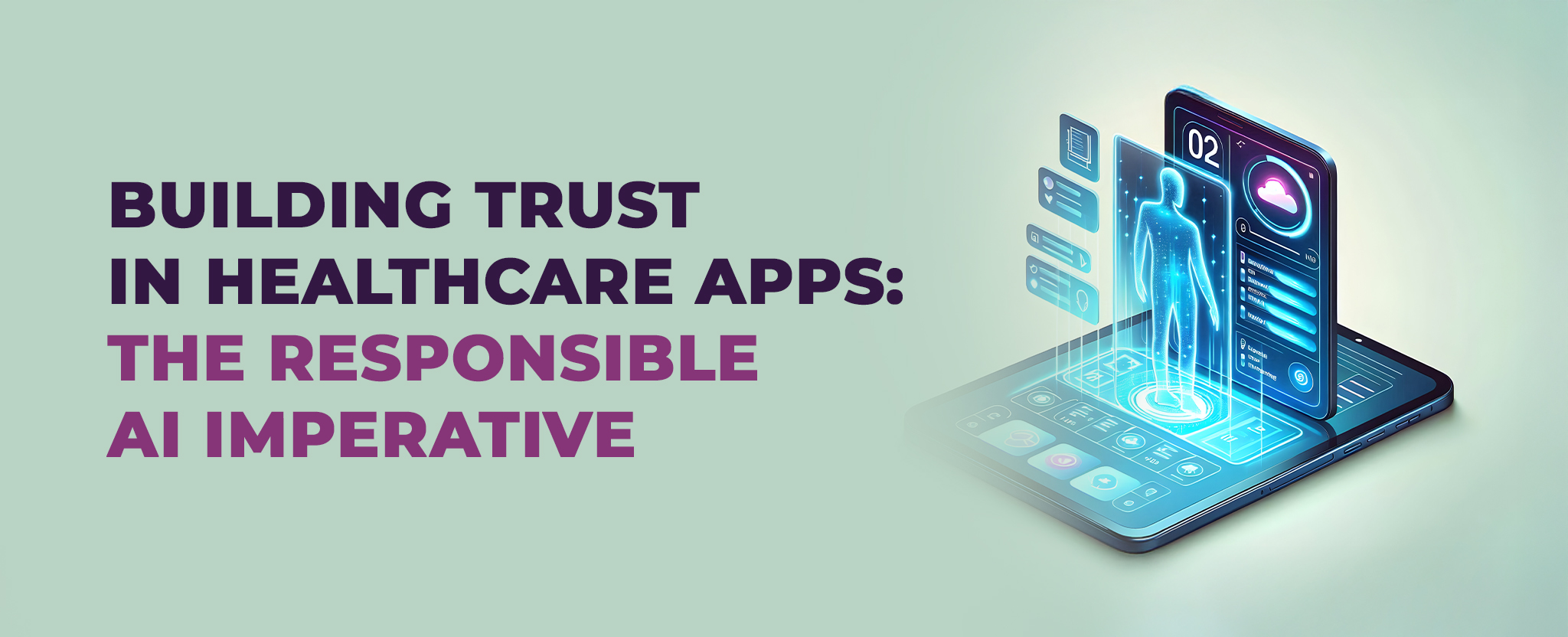
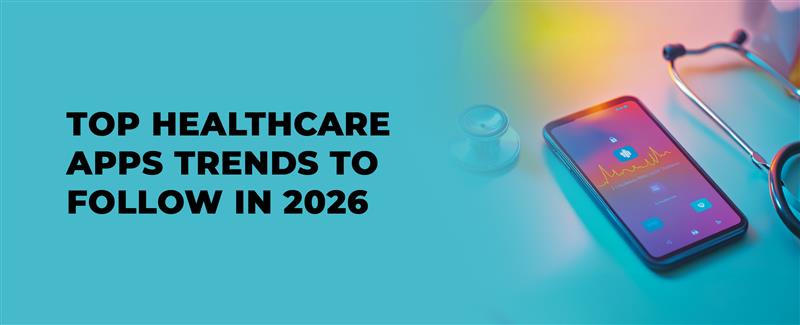
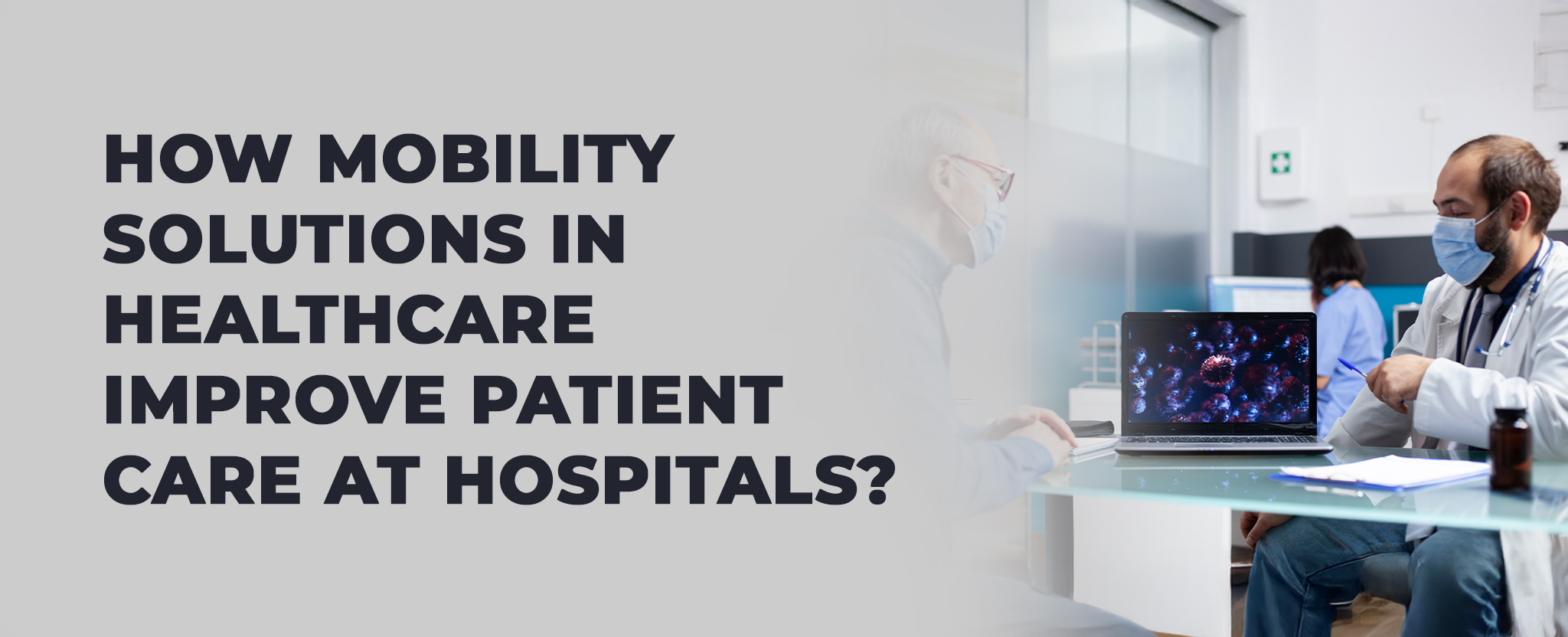
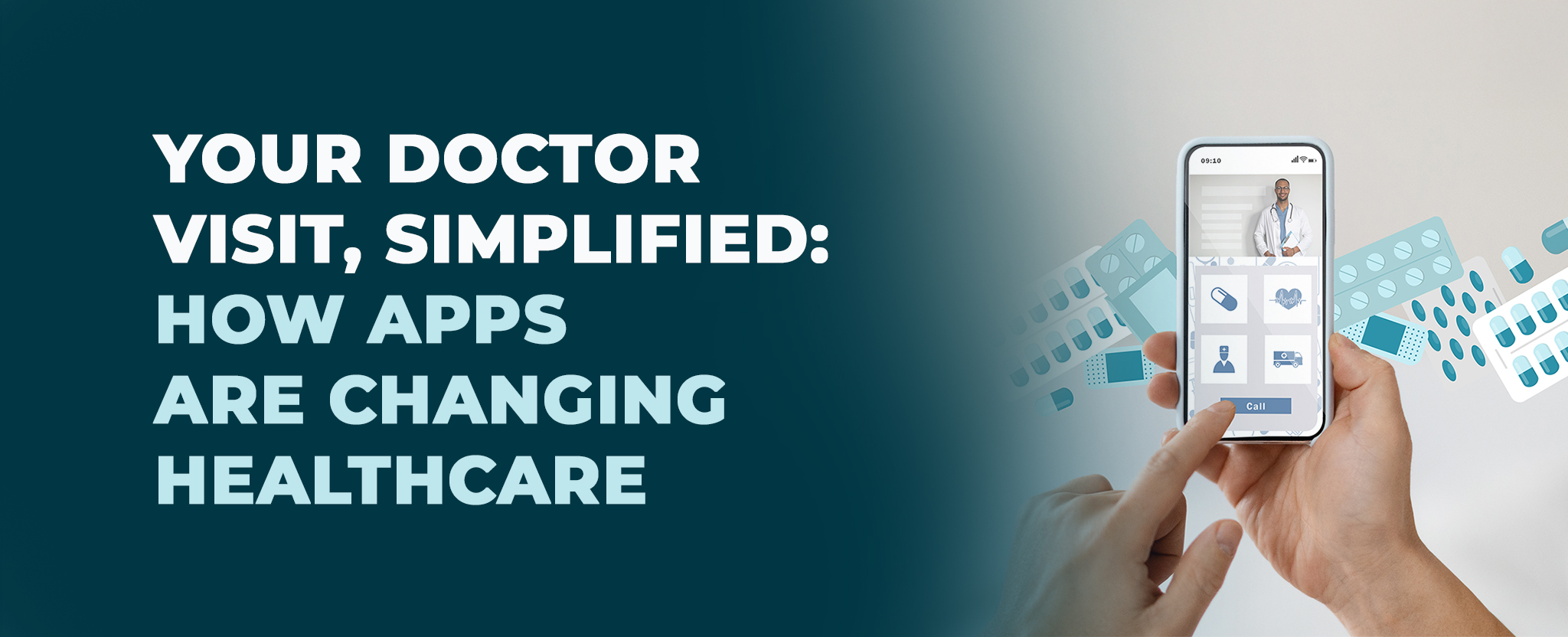






Comments